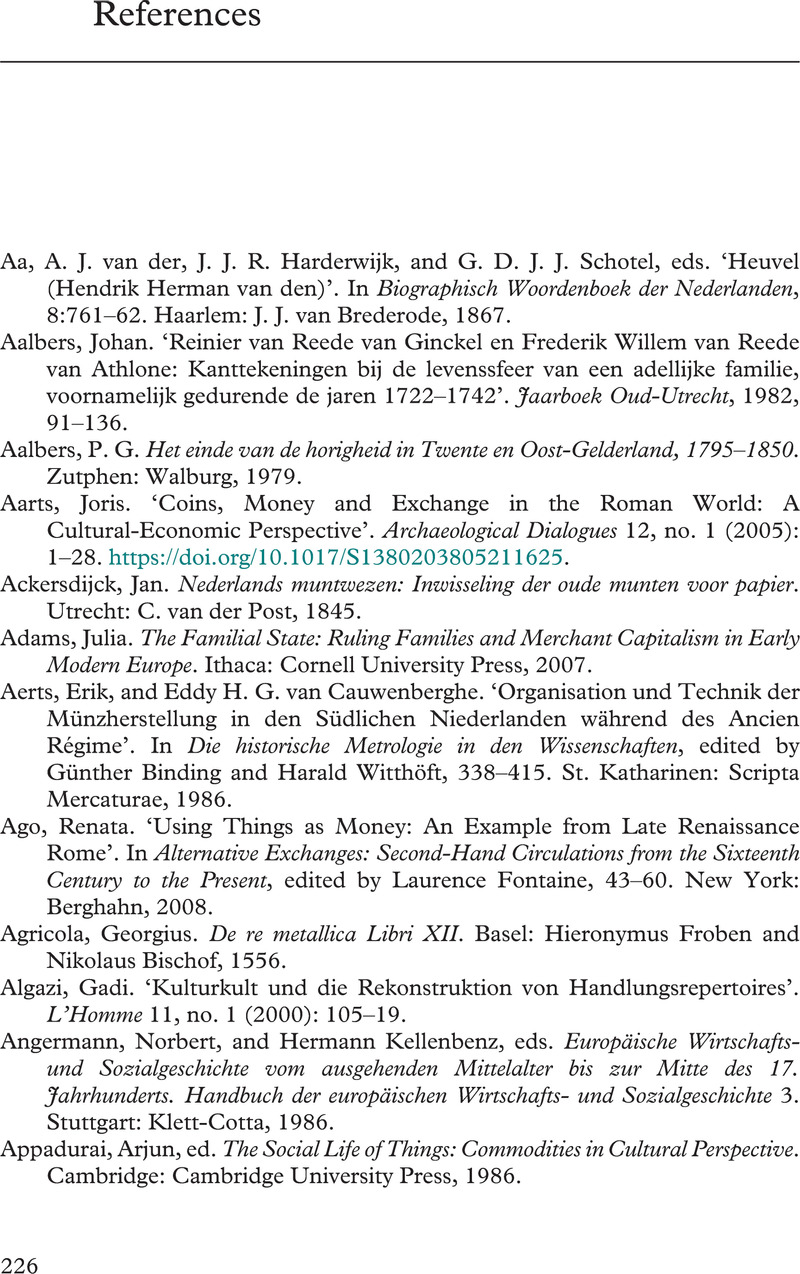Book contents
- Money in the Dutch Republic
- Money in the Dutch Republic
- Copyright page
- Dedication
- Contents
- Figures
- Tables
- Acknowledgements
- Introduction
- 1 Money as Social Technology
- 2 Grain Money in a Farming Community
- 3 Ink Money in a Princely Estate
- 4 Metallurgy and the Making of Intrinsic Value
- 5 Mercantile Practice and Everyday Use
- 6 Patriotic Economics and the Making of a National Currency
- Conclusion
- Appendix
- Archival Sources
- References
- Index
- References
References
Published online by Cambridge University Press: 03 March 2022
- Money in the Dutch Republic
- Money in the Dutch Republic
- Copyright page
- Dedication
- Contents
- Figures
- Tables
- Acknowledgements
- Introduction
- 1 Money as Social Technology
- 2 Grain Money in a Farming Community
- 3 Ink Money in a Princely Estate
- 4 Metallurgy and the Making of Intrinsic Value
- 5 Mercantile Practice and Everyday Use
- 6 Patriotic Economics and the Making of a National Currency
- Conclusion
- Appendix
- Archival Sources
- References
- Index
- References
Summary

- Type
- Chapter
- Information
- Money in the Dutch RepublicEveryday Practice and Circuits of Exchange, pp. 226 - 259Publisher: Cambridge University PressPrint publication year: 2022



